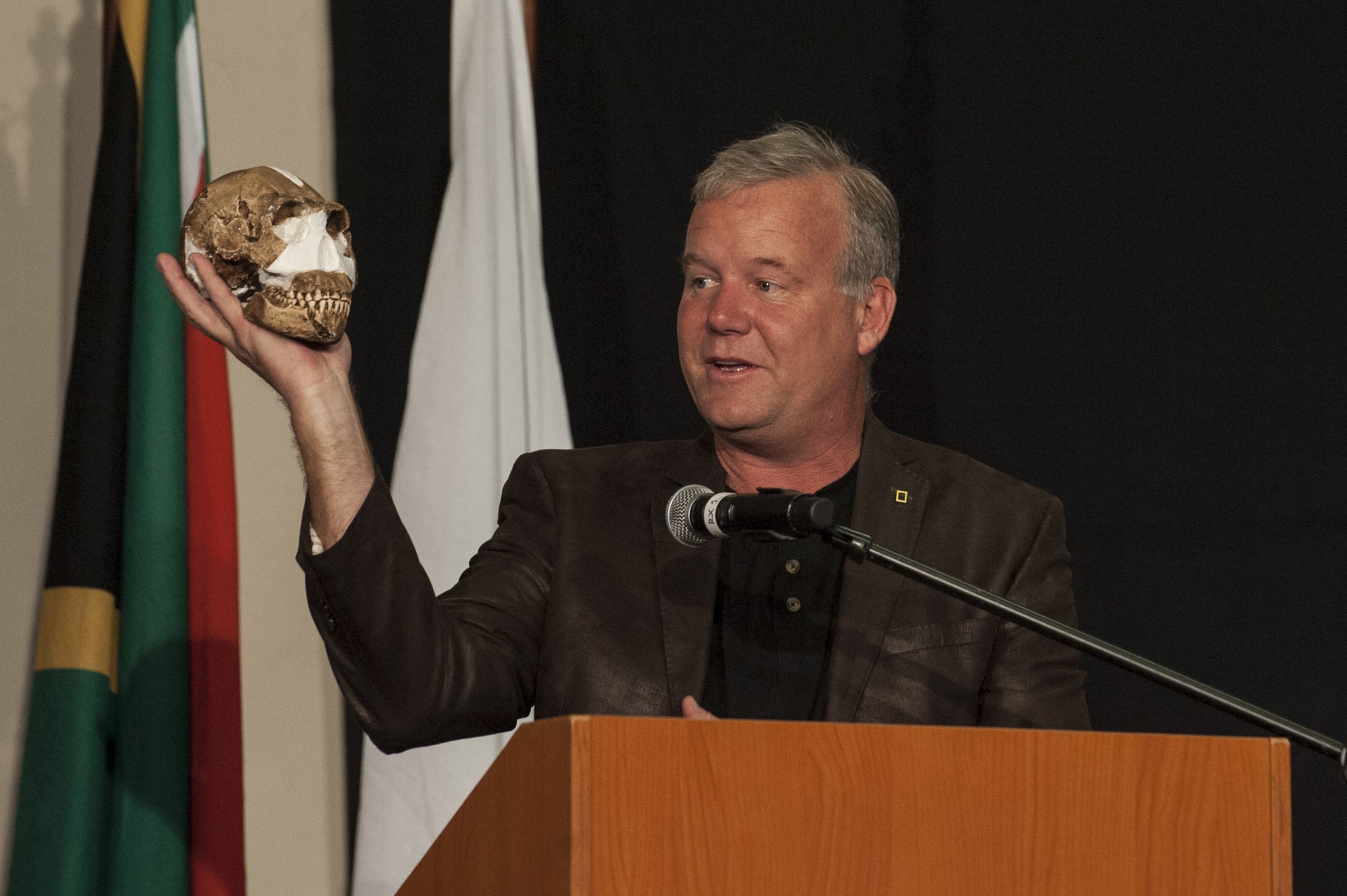
Lee Berger has a strange problem for an archaeologist leading an excavation: He can't actually access the site, and will likely never be able to. That's because it's buried in a cave in South Africa, tucked behind a steep-sided ridge nicknamed the Dragon's Back and at the bottom of a 40-foot chute that at one point measures just seven inches wide.
To access his target, Berger, a paleoanthropologist at the University of the Witwatersrand in South Africa, hires cavers slender enough to fit through that seven-inch gap and with excavation experience to uncover the remains of early hominins. But he still wants a glimpse of the site, which in 2015, yielded the bones of an entirely new species of hominin now referred to as Homo naledi. And he expects you do, too—which is why he's also having the excavators bring a host of technology, from 3D cameras to Wi-Fi, into the chambers.
That means people thousands of miles away from the chambers and without the petite statureand physical ability needed to reach them can come along for the ride as scientists continue excavating Homo naledi remains and search for any associated artifacts.
For Berger, that broadcast is not just about sharing cool findings, it's about making science as a whole more accessible to non-scientists. "I believe we must pull all aspects of science from the "black box" where it typically resides," Berger wrote in an email to Newsweek. He is particularly dismayed by the secrecy often surrounding subject areas like human origins, with only a limited few gaining access to information around discoveries. As he sees it, "these fossils and this science is about our shared human heritage."
Berger has been adamant about sharing his Homo naledi research all along, including publishing detailed 3D printer instructions for people who want to make copies of the remains. And as the excavation unfolds, Berger is tweeting from the site now, as are a handful of other archaeologists and accounts connected to the project.
He plans to livestream regularly to the public and to classrooms, including both conversations and footage of the actual excavation work. Other outreach projects associated with the dig include an account tweeting and streaming video updates in Sesotho and Setswana, two local African languages. The team is also using 3D cameras to film the site and wants to explore virtual reality technology as well.
Read more: Neanderthal Tools Discovered in Italy Charred With Fire but in Stunning Condition
That technology isn't just about public outreach; it's also crucial from the science perspective. Plenty of experts will never be able to study the site in person. "Certainly technology is the only way I will ever see the inside of that chamber," Berger wrote. Without being able to see the chamber in person, 3D re-creations are the best way for him and his colleagues to truly understand the space.
The team has used technology in the chambers before—in fact, they even tried leaving some of that equipment between excavation sessions. That strategy didn't work so well, thanks to harsh conditions and toothy critters inside the cave that destroyed the equipment.
Report in from explorers - we need to replace four cameras all intercoms modems and the power supplies to these Oh and rats, mice or hyrax ate through the CAT6 cable at #Risingstar but hey the power cable still has electricity! Plan to speed things up by leaving in cave gets an F
— Lee Berger (@LeeRberger) February 26, 2018
But this excavation is just the second time they're bringing the Internet into the chambers. "The system this time around should be faster, with better cameras and better communications," Berger wrote. "We learned a lot of what works, and what doesn't work on our last expedition."
The current excavation is scheduled to continue through the end of March, although Berger says he is trying to extend the outreach projects to continue throughout the year, following people working around the site as well as in the tricky chamber. That would mean a year-round window into the latest news about our distant ancestors.
Uncommon Knowledge
Newsweek is committed to challenging conventional wisdom and finding connections in the search for common ground.
Newsweek is committed to challenging conventional wisdom and finding connections in the search for common ground.
About the writer
Meghan Bartels is a science journalist based in New York City who covers the science happening on the surface of ... Read more
To read how Newsweek uses AI as a newsroom tool, Click here.








